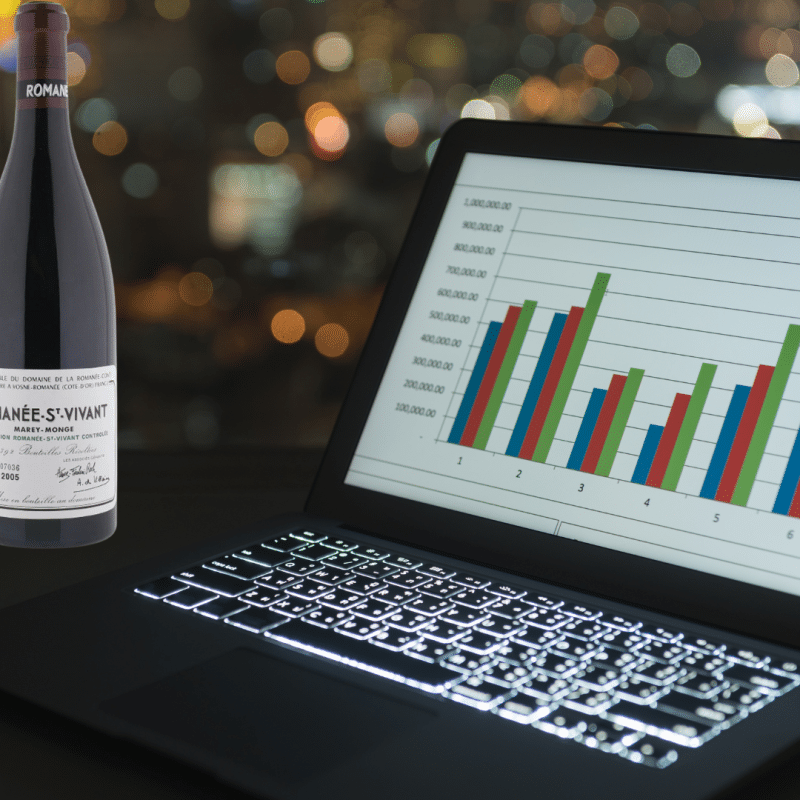Wine Education
Investing in Wine: The Best Ways to Start
Wine is more than just a beverage—it’s a living product that evolves over time, offering complexity and depth that few other collectibles can match. While many people simply buy wine to drink, it is possible to carefully curate wine collection that can appreciate in value, offering significant financial returns. For younger wine enthusiasts, with more than average knowledge and an eye toward purchasing by the case, investing in wine can be an exciting process.
In this blog post, we’ll explore the fundamentals of investing in wine: what to look for, how to start building your collection, and the potential rewards and risks that come with this unique form of investment.
Why Invest in Wine?
Before diving into the details, it’s important to understand why wine is considered a viable investment. Like art, fine wine has intrinsic value that can increase over time. A great vintage from a prestigious region can evolve beautifully, becoming more desirable as the supply dwindles and the wine reaches its peak drinking window.
Here are a few reasons why wine is attractive as an investment:
- Scarcity: Fine wine is produced in limited quantities, and once a vintage is consumed, it’s gone. As time goes on, the supply of highly sought-after wines decreases, driving up their value.
- Aging Potential: Some wines improve significantly with age, gaining complexity and depth. Collectors seek out these wines as they develop, often becoming more expensive as they near their optimal drinking window.
- Diversification: For those already involved in traditional investments like stocks or real estate, wine offers an alternative investment option. It’s a tangible asset that provides diversification in a portfolio.
- Enjoyment: Even if your wine doesn’t appreciate dramatically in value, you still have the pleasure of drinking it! Unlike stocks, which offer no immediate personal enjoyment, wine can provide a unique mix of emotional and financial return.
What to Look for When Investing in Wine
Wine investing requires a discerning eye and a good understanding of what makes certain wines collectible. Not all wines appreciate in value, so it’s important to focus on specific criteria:
- Reputation of the Producer: Iconic wine producers with a history of crafting highly sought-after wines are the backbone of a successful wine investment strategy. Bordeaux’s Classified Growths (e.g., Château Margaux, Château Lafite Rothschild), Burgundy’s top domaines (e.g., Domaine de la Romanée-Conti), and renowned Napa Valley estates (e.g., Screaming Eagle) are all names that consistently perform well in the secondary market. These producers have established themselves as benchmarks for quality, making their wines prime targets for investment.
- Vintage Quality: Not all vintages are created equal. A wine’s vintage can have a significant impact on its long-term value. Exceptional vintages are usually the result of perfect growing conditions that lead to balanced, age-worthy wines. Researching the top vintages from key wine regions, such as Bordeaux, Burgundy, Champagne, and Napa Valley, is crucial. For instance, in Bordeaux, vintages like 2000, 2005, and 2010 are considered legendary and command high prices. Wine publications like Wine Spectator and The Wine Advocate or retailers like Berry Brothers & Rudd provide vintage charts that you can use to your advantage.
- Aging Potential: Some wines are designed to age gracefully over decades, and these wines are the most attractive for investment. Tannic reds like Bordeaux, Barolo, and some Napa Cabernet Sauvignons often improve with time, softening and gaining complexity. A wine that can age 20 to 30 years without losing its structure is more likely to see significant appreciation.
- Critical Scores: The opinions of independent, professional wine critics, such as Vinous, Jeb Dunnock or Jancis Robinson, can heavily influence a wine’s investment potential. Wines that receive high scores—especially those above 95 points—are often more in demand and likely to appreciate in value. A stellar review can drive demand and raise a wine’s market value. Be careful with reviewers, though. Some are infamous for providing inflated scores in order to attract advertising. Follow only well-regarded, independent reviewers
- Scarcity and Provenance: Wines with small production runs or limited releases tend to be more collectible. Rare, hard-to-find bottles become highly sought after by collectors. In addition, the wine’s provenance, or chain of custody, is critical. A well-documented history of proper storage and care adds to a wine’s value, as buyers want assurance that the wine has been stored in optimal conditions.
Building Your Wine Investment Portfolio
As with any investment, diversification is key. When building a wine collection, it’s wise to spread your risk across different regions, producers, and vintages. Here’s how to get started:
- Start with Blue-Chip Wines: These are the top-tier, highly collectible wines that have a proven track record of appreciating in value. Think Bordeaux Classified Growths, Burgundy 1er or Grand Crus, and cult Napa Valley Cabernet Sauvignons. These wines are considered “blue-chip” because they have established reputations and are consistently in demand.
- Explore Emerging Markets: In addition to the classic regions, consider exploring emerging wine markets such as Italy’s Super Tuscans (e.g., Sassicaia, Ornellaia) or premium wines from Spain (e.g., Vega Sicilia). These wines often represent excellent value for money, with the potential for significant appreciation as demand increases.
- Buy by the Case: Investing in wine by the case rather than by the bottle is advantageous for several reasons. Not only is it easier to sell wine by the case (as buyers often prefer to purchase in bulk), but it also allows you to monitor the wine’s evolution over time. You can enjoy a few bottles at different stages while holding onto others for future sale or aging.
- Use a Reputable Storage Facility: Proper storage is essential for wine investment. Wines must be kept at the correct temperature (around 55°F), humidity (70%), and away from light and vibrations. Professional wine storage facilities offer the ideal conditions and, just as importantly, documentation to ensure your wine’s provenance, which adds value.
- Track Your Portfolio: As your wine collection grows, it’s important to track the value of your wines. Use a cellar program like Cellar Tracker or VinCellar to keep track of your inventory and costs. Once a year, it is a good idea to update the values. Check platforms like Liv-ex (London International Vintners Exchange) and auction sites like Sotheby’s or, in Canada, IronGate, allow you to monitor the market value of your wines. This helps you decide when to hold, sell, or drink your wines.
Potential Risks of Wine Investment
While investing in wine can be lucrative, it’s not without risks. Here are some factors to consider before diving in:
- Market Fluctuations: As with any asset, the wine market can experience volatility. Prices may fluctuate due to changes in global demand, economic conditions, or trends in wine consumption. For example, 2008 First Growth Bordeaux are still below their release price more than 15 years later.
- Storage Costs: Proper storage is critical, but it also comes with a cost. High-quality wine storage facilities can be expensive, especially if you have a large collection. Some storage facilities provide inexpensive bulk storage which does not give you 24/7 access to your wines, but which is more economical if you are storing for many years.
- Counterfeiting: Unfortunately, the fine wine market has seen instances of counterfeiting. To protect your investment, always buy from trusted sources, and verify the provenance of the wine.
- Liquidity: Wine is a relatively illiquid asset compared to stocks or bonds. It may take time to find a buyer for your wine, especially if you are selling a large quantity. Auction houses and online platforms can help, but sales may not happen quickly.
Final Thoughts: Is Wine Investment Right for You?
Investing in wine can be a rewarding endeavor, both financially and personally. For some wine lovers, it’s a natural progression. However, wine investment requires patience, proper storage, and a keen understanding of what makes a wine collectible.
Whether you’re buying cases of Bordeaux or curating a collection of rare Burgundies, the key is to focus on quality and scarcity. By understanding the intricacies of vintage, producer reputation, and aging potential, you can build a portfolio of wines that offers both enjoyment and potential financial return.
After all, even if the market fluctuates, the pleasure of opening a beautifully aged bottle will always remain. Cheers to smart, delicious investments!

